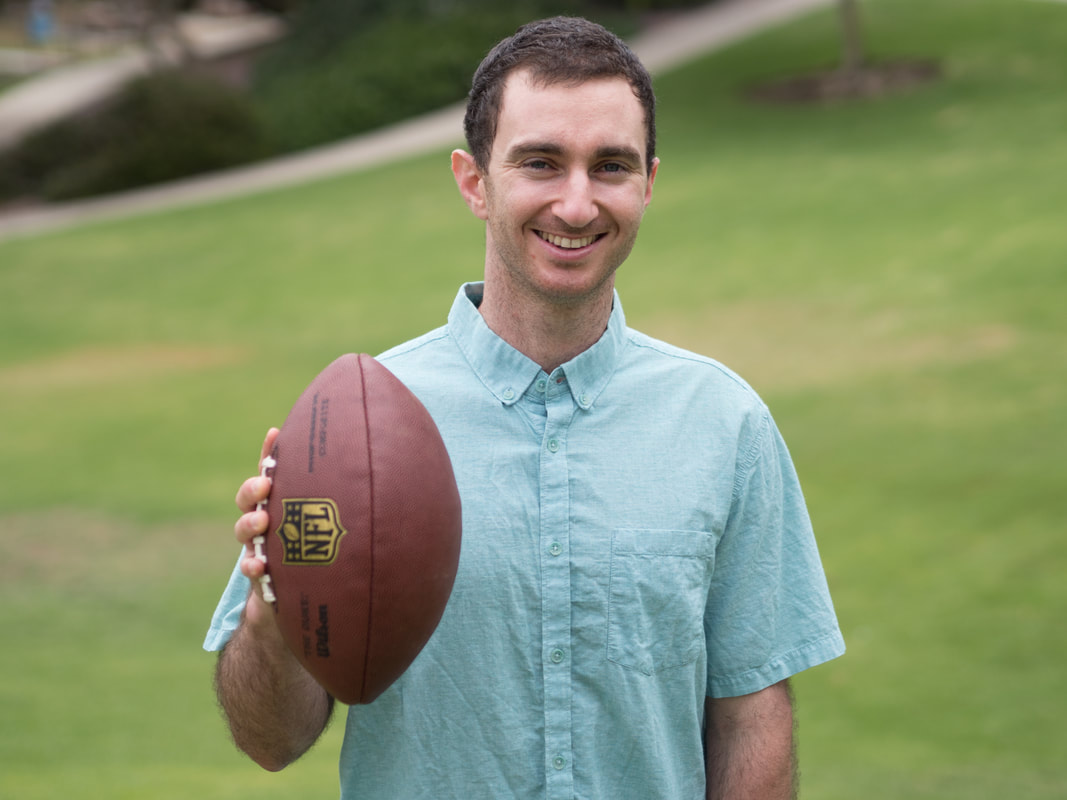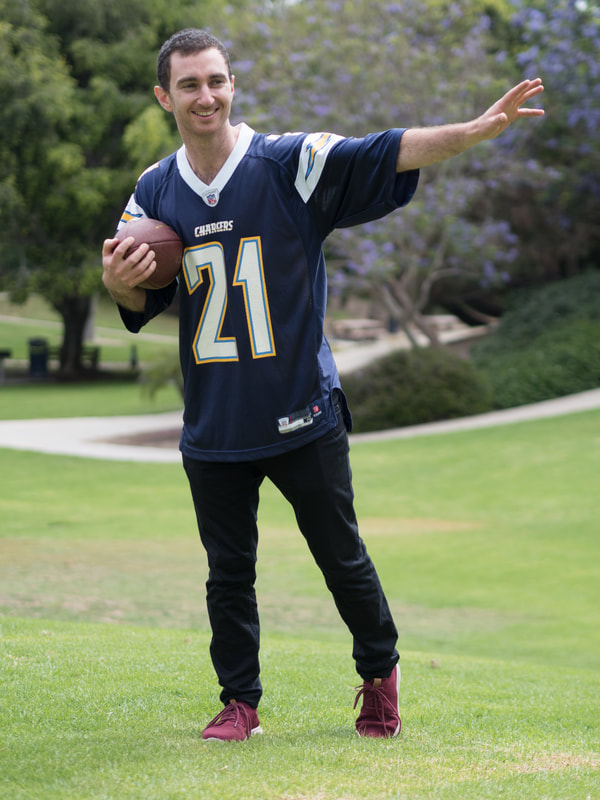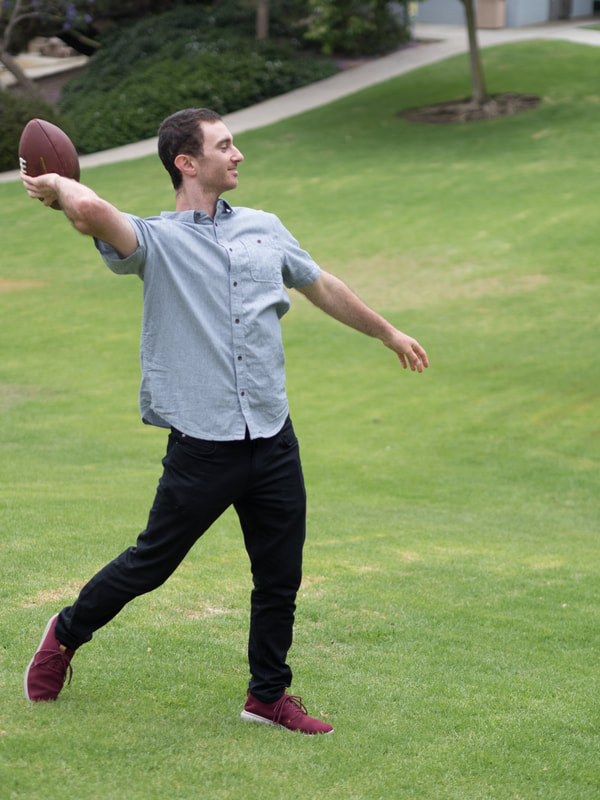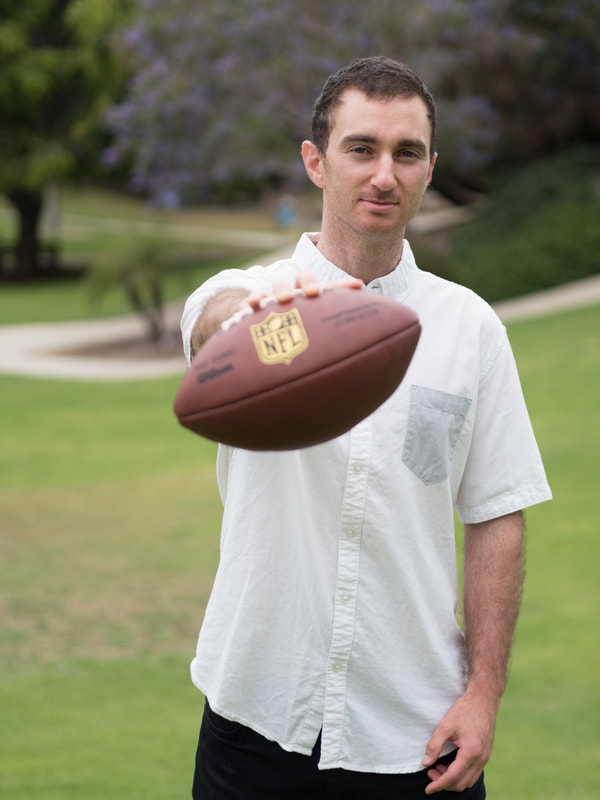What is R?
|
Syllabus
|
That LaDainian Tomlinson jersey is not just for show. Check out his career as part of the Lesson 1-4 review dataset!
Pictured here is the actual nerd and actual laptop used to create this course.
Obviously a touchdown pass. Anyone else prefer playing tackle sports in a button down shirt? No, just me...?
Standing 5'9" and weighing almost 158 lbs, he ran a 4.96 40-yard dash, couldn't bench 225 at the combine, and is unsure if he'll get drafted all... But dang, he looks good holding the football at that angle. And more importantly, he can code in R.
|





